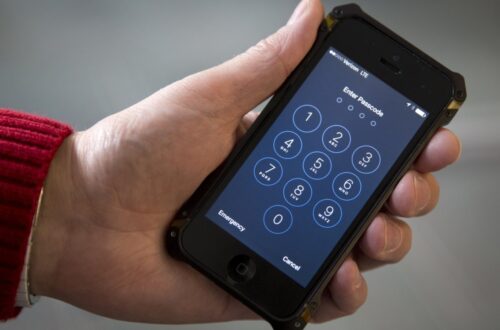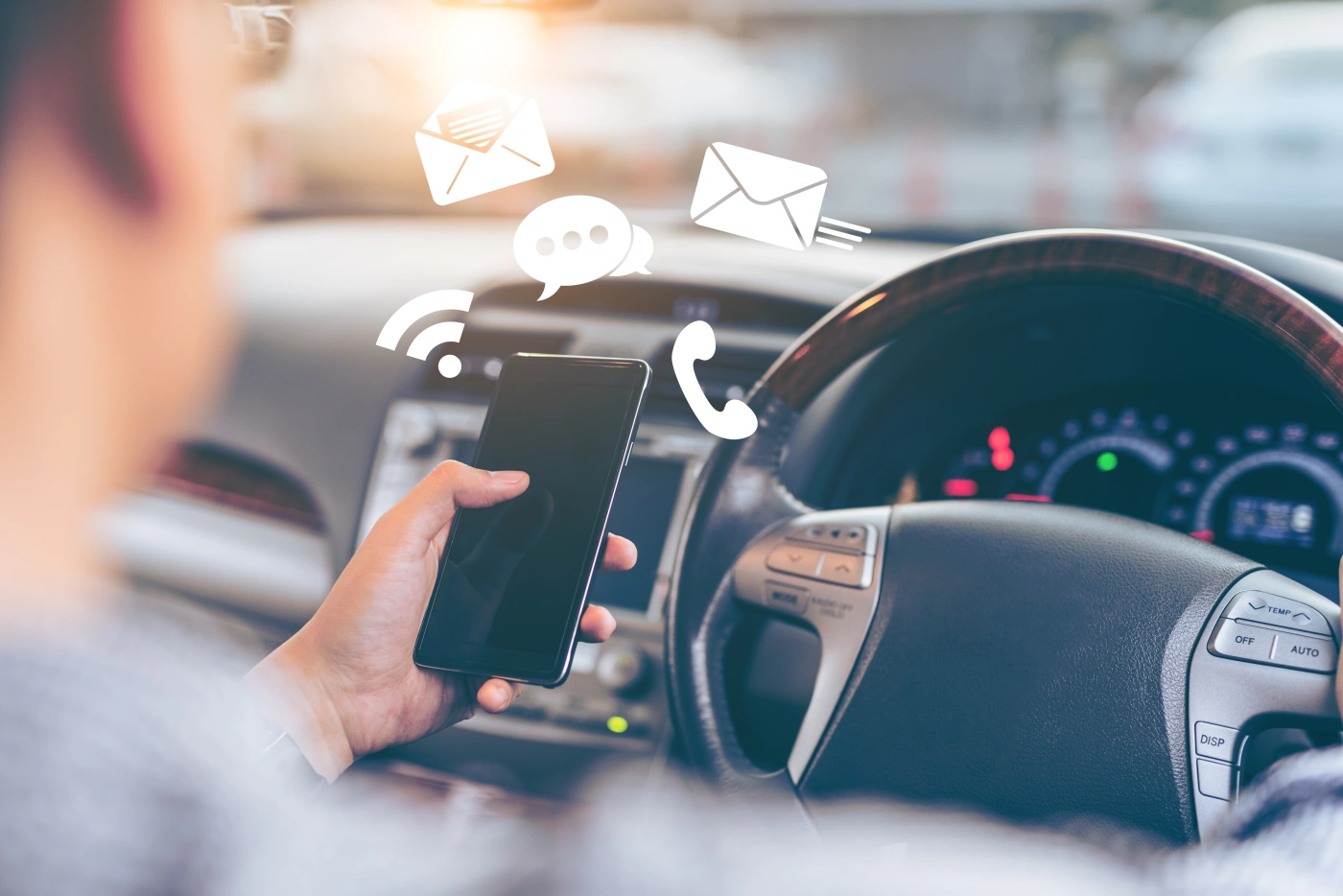Reduce the risk of accidents by focusing on the road and eliminating distractions. Adjust your seat, mirrors, and controls before driving, making sure all passengers are buckled up. Silence non-essential notifications, use hands-free features for calls, and prioritize safety over phone use. Avoid eating and drinking to keep your hands on the wheel and plan ahead for meals. Secure passengers and pets properly for a safer journey. Take advantage of technology like Bluetooth and apps that block notifications. Stay mindful, anticipate hazards, and make proactive decisions. Enhance your driving safety with these tips.
Understanding Distracted Driving
To understand distracted driving, recognize that it involves any activity that diverts your attention away from the task of driving. It's not just about texting or talking on the phone; it includes eating, adjusting the radio, or even daydreaming. Anything that takes your focus off the road can have serious consequences.
When you engage in distractions while driving, you greatly increase the risk of accidents. Studies have shown that texting, for example, makes you 23 times more likely to crash. This is because your brain is unable to fully concentrate on driving while also processing other information.
Setting Up a Safe Driving Environment
Creating a safe driving environment starts with eliminating distractions and making sure your full focus is on the road ahead. Begin by adjusting your seat, mirrors, and climate control before you start driving. Confirm all passengers are safely buckled up and any loose items in the car are secured. Keep the volume of the radio at a reasonable level so you can hear emergency vehicles or honking horns. Avoid eating or drinking while driving to prevent spills or taking your hands off the wheel. Additionally, guarantee your car is well-maintained with regular check-ups to prevent any sudden breakdowns on the road. Keep your car organized so that you can easily access any essentials without fumbling around. Finally, familiarize yourself with the route before you start driving to reduce the need for looking at maps or GPS while on the road. By setting up a safe driving environment, you can minimize distractions and focus on arriving at your destination safely.
Minimizing Phone Use While Driving
When driving, prioritize safety by minimizing your phone use to stay focused on the road ahead. Here are four practical tips to help you reduce distractions caused by your phone while driving:
- Silence Notifications: Turn off all non-essential notifications on your phone before you start driving. This will help you avoid the temptation to check your phone whenever it beeps or vibrates.
- Use Hands-Free Features: If you must make a call or use GPS, utilize hands-free options like Bluetooth or voice commands. This allows you to keep your hands on the wheel and your eyes on the road.
- Pull Over if Necessary: If you need to make a call or respond to a message urgently, find a safe place to pull over before using your phone. Your safety and the safety of others on the road should always come first.
- Designate a Navigator: If you're driving with others, designate a passenger as the navigator. Let them handle phone calls, texts, or any phone-related tasks, so you can focus solely on driving safely.
Avoiding Eating and Drinking Behind the Wheel
Consider the risks associated with consuming food or beverages while driving, as it can lead to distractions and compromise your focus on the road. Eating or drinking behind the wheel requires manual, visual, and cognitive attention that should be solely dedicated to driving safely. The act of unwrapping food, taking a bite, or grabbing a drink diverts your hands from the wheel, your eyes from the road, and your mind from the task of driving.
To avoid these distractions, plan your meals ahead of time and eat before getting into the car. If you need to eat on the go, opt for easy-to-eat snacks that don't require unwrapping or complex handling. Alternatively, pull over at a safe location to enjoy your meal or snack. Remember, your safety and the safety of others on the road should always come first. By eliminating eating and drinking while driving, you can significantly reduce the chances of being involved in a distracted driving incident.
Managing Passengers and Pets in the Car
Guarantee that passengers and pets are securely restrained while traveling in your vehicle to minimize distractions and enhance safety on the road. It's vital to make sure that everyone in the car is properly secured to prevent any unnecessary movements that could divert your attention from driving. Here are some tips to help you manage passengers and pets effectively:
- Buckle Up: Make sure all passengers, including yourself, are wearing seat belts before starting the journey.
- Child Safety Seats: Use appropriate child safety seats for young children based on their age, height, and weight.
- Pet Restraints: Secure pets in specially designed carriers or use pet seat belts to restrain them during the ride.
- Set Expectations: Communicate with your passengers about the importance of staying calm and avoiding distractions while in the vehicle.
Utilizing Technology for Safe Driving
To enhance your driving experience and reduce distractions, incorporate technology that promotes safe practices behind the wheel. Start by utilizing hands-free features such as Bluetooth connectivity for calls and voice commands for navigation. These tools allow you to stay connected without taking your hands off the wheel or eyes off the road. Consider installing apps that block incoming notifications while driving to prevent the temptation of checking your phone. Some apps can even send automated responses to let others know you are driving.
Invest in a phone mount to keep your device within sight without obstructing your view. This way, you can easily glance at navigation prompts or incoming calls without fumbling for your phone. Take advantage of built-in safety features in newer vehicles like lane departure warnings, forward collision alerts, and automatic emergency braking systems. These technologies act as an extra set of eyes and help mitigate potential accidents. By incorporating these technological advancements into your driving routine, you can prioritize safety and minimize distractions on the road.
Practicing Mindful Driving Techniques
Embrace the concept of mindfulness while driving to enhance your focus and awareness on the road. By practicing mindful driving techniques, you can greatly reduce the risk of accidents and guarantee a safer journey for yourself and others. Here are some tips to help you drive with mindfulness:
- Stay Present: Focus on the task at hand and avoid distractions like texting or adjusting the radio.
- Use Your Senses: Pay attention to what you see, hear, and feel while driving to stay fully engaged.
- Control Your Emotions: Stay calm and composed, especially in challenging driving situations.
- Plan Ahead: Anticipate potential hazards on the road and make proactive decisions to avoid them.
Incorporating these mindful driving practices into your routine can make a substantial difference in your driving experience. Remember, being present and attentive behind the wheel not only keeps you safe but also promotes a culture of responsible driving for everyone on the road.
Frequently Asked Questions
How Can I Effectively Communicate With Passengers in the Car Without Getting Distracted While Driving?
To effectively communicate with passengers in the car without getting distracted while driving, make sure everyone knows the importance of safety. Encourage brief conversations, limit loud music, and designate a co-pilot to handle tasks that require full attention.
What Are Some Strategies for Dealing With Unexpected Distractions While Driving?
When dealing with unexpected distractions while driving, stay focused on the road ahead. Limit unnecessary conversations and avoid using your phone. Stay calm, react calmly, and prioritize safety. Remember, your attention is essential for safe driving.
Are There Any Specific Tips for Driving Safely in Adverse Weather Conditions?
When driving in adverse weather conditions, slow down, increase following distance, use headlights, and avoid sudden maneuvers. Stay focused, anticipate hazards, and be prepared to adjust your driving to guarantee a safe journey despite the challenging weather.
How Can I Prevent Drowsy Driving and Stay Alert on Long Road Trips?
To prevent drowsy driving and stay alert on long road trips, take breaks every two hours, get enough rest before driving, avoid heavy meals, and switch drivers if possible. Stay hydrated, listen to upbeat music, and open windows for fresh air.
What Should I Do if I Encounter a Distracted Driver on the Road?
If you encounter a distracted driver on the road, maintain a safe distance, avoid confrontation, and report them to authorities if necessary. Your safety is a priority, so stay vigilant and focused on your own driving.
Conclusion
To sum up, by following the tips outlined in this guide, you can greatly reduce the risks of distracted driving. Remember to prioritize safety on the road by minimizing distractions, setting up a safe driving environment, and practicing mindful driving techniques. Your actions can make a difference in keeping yourself and others safe while on the road. Stay focused, stay aware, and drive responsibly.




